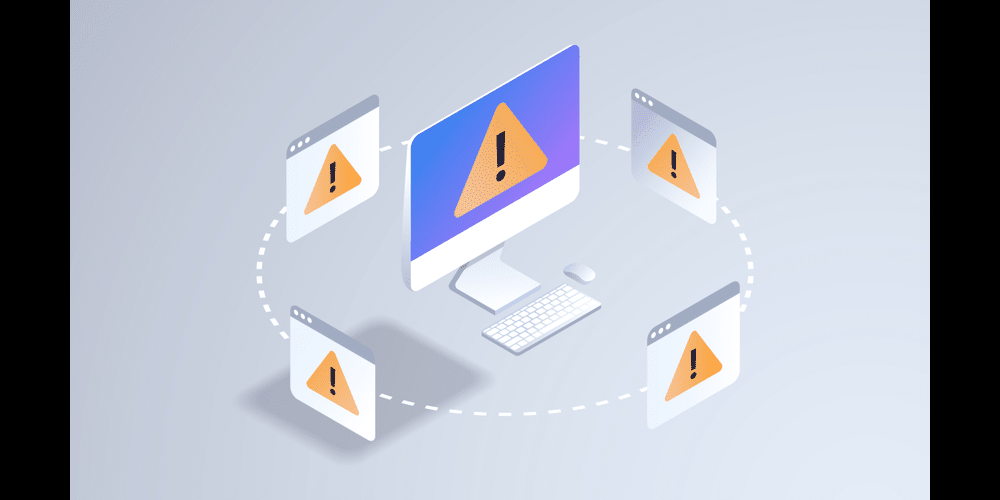Which Tools are Commonly used for Effective Error Monitoring?

In the vast world of technology, where digital landscapes are ever-changing, errors in software applications are a common challenge. However, the good news is that developers have a set of powerful tools at their disposal to identify, track, and manage errors effectively.
In this article, we will explore these essential tools that are pivotal in ensuring smooth and error-free digital experiences.
Which tools are commonly used for effective Error Monitoring?
- Google Analytics: Understanding User Behavior:
Google Analytics is not just a tool for tracking website traffic; it also provides valuable insights into user behavior and helps identify potential errors. By analyzing user interactions, developers can pinpoint areas where users might encounter issues, allowing for targeted error resolution.
- Sentry: Real-Time Error Tracking:
Sentry is a real-time error-tracking tool that allows developers to monitor and fix issues as they occur. It provides detailed error reports, including stack traces and contextual information, enabling developers to quickly understand the root cause of problems. Sentry supports multiple programming languages, making it versatile for various development environments.
- New Relic: Comprehensive Application Performance Monitoring:
New Relic goes beyond error tracking by offering comprehensive application performance monitoring. It provides insights into various aspects of application performance, including errors, response times, and system resource utilization. This holistic approach helps developers identify bottlenecks and optimize overall application efficiency.
- Rollbar: Automatic Error Monitoring:
Rollbar is an automatic error-monitoring tool that detects and notifies developers about real-time errors. It supports multiple programming languages and frameworks, making it suitable for diverse development environments. Rollbar’s automatic error grouping and alerting features streamline the debugging process.
- Raygun: User-Centric Error Monitoring:
Raygun focuses on user-centric error monitoring, providing developers insights into how errors impact the end-user experience. It offers crash reporting, real-time error tracking, and detailed error diagnostics. Raygun’s user-centric approach helps prioritize and address issues that significantly impact users.
- Datadog: End-to-End Observability:
Datadog offers a comprehensive observability platform that covers error tracking, logs, and application performance monitoring. By providing end-to-end visibility, Datadog enables developers to correlate errors with system performance, facilitating a more thorough understanding of application behavior.
- Bugsnag: Prioritizing and Debugging Errors:
Bugsnag specializes in prioritizing and debugging errors efficiently. It offers real-time error tracking, crash reporting, and intelligent error grouping. Bugsnag’s dashboard provides a clear overview of error trends, helping developers focus on resolving critical issues first.
- AppDynamics: Monitoring Business Impact:
AppDynamics monitors technical aspects like errors and performance and assesses the business impact of these issues. Developers can prioritize and address problems that significantly impact overall success by understanding how errors affect user satisfaction and business transactions.
- Airbrake: Simplifying Error Tracking:
Airbrake simplifies error tracking with its easy-to-use interface and automatic error grouping. It captures detailed error information, including stack traces and contextual data, helping developers identify and resolve issues quickly. Airbrake’s simplicity makes it suitable for teams seeking a user-friendly error-monitoring solution.
- Loggly: Log Management for Error Analysis:
Loggly focuses on log management, making it a valuable tool for error analysis. By aggregating and analyzing logs, developers can gain insights into application behavior and identify potential errors. Loggly’s search and visualization features make navigating and understanding log data easier.
- ELK Stack: Log Analysis and Monitoring:
The ELK Stack (Elasticsearch, Logstash, and Kibana) is a powerful combination for log analysis and monitoring. Elasticsearch allows for fast and scalable search and analytics, Logstash helps in centralized log processing, and Kibana provides a user-friendly interface for visualizing log data. Together, they offer a comprehensive solution for identifying and troubleshooting errors through log analysis.
- Graylog: Centralized Log Management:
Graylog is a centralized log management tool that allows developers to collect, index, and analyze log data from various sources. It supports real-time log monitoring and alerting, making detecting and responding to errors promptly easier. Graylog’s intuitive interface and search capabilities simplify the exploration of log data for error identification.
- Dynatrace: AI-Driven Observability:
Dynatrace takes error monitoring to the next level with its AI-driven observability platform. It automatically discovers and monitors application dependencies, providing a holistic view of the entire system. By leveraging artificial intelligence, Dynatrace can proactively identify anomalies and potential errors, enabling developers to stay ahead of issues before they impact users.
- Prometheus: Open-Source Monitoring and Alerting:
Prometheus is an open-source monitoring and alerting toolkit designed for reliability and scalability. It specializes in collecting and querying time-series data, making it well-suited for error monitoring. Prometheus can be integrated with various exporters to gather metrics from different components, offering a flexible solution for identifying and addressing errors in a distributed system.
Conclusion:
In short, choosing the right tool depends on various factors, including the development environment, the scale of the application, and specific monitoring needs. By leveraging these tools, developers can proactively address errors, optimize application performance, and deliver a seamless digital experience for users worldwide. Embracing these error-monitoring tools is not just a best practice; it is a strategic investment in the success and longevity of digital endeavors.
Read More From Techbullion





